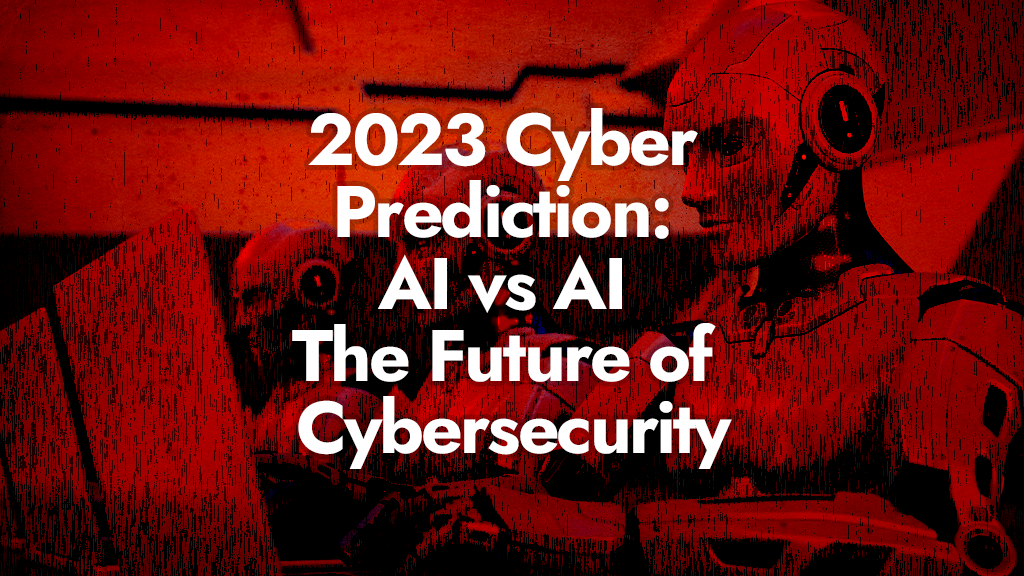2023 CyberSecurity Predictions: AI vs AI – The Future of Cybersecurity

Predictions for the new year from Joshua Crumbaugh, CEO of Phishfirewall and 15 year Ethical Hacker
The Rise of Sophisticated AI-Driven Phishing Attacks
One of the biggest trends in cybersecurity expected in 2023 is the rise of AI-driven phishing attacks. These attacks are particularly dangerous because they use artificial intelligence to create customized, highly targeted messages that are designed to trick individuals into giving away sensitive information or clicking on malicious links.
One example of an AI-generated phishing attack is a personalized email that appears to come from a trusted source, such as a boss or colleague. The email may contain a link or attachment that, when clicked, installs malware on the recipient’s device. This malware can then be used to steal sensitive data, disrupt operations, or even launch further attacks on the organization.
Another example of an AI-driven phishing attack is a voice-based scam, where the attacker uses advanced voice synthesis technology to create a realistic-sounding voice that appears to be from a trusted source. This type of attack can be particularly effective because it preys on the natural human tendency to trust the spoken word.
In 2023, we can expect to see an increase in these types of attacks as AI technology continues to advance and become more accessible to cybercriminals. In order to mitigate these threats, organizations should implement robust security measures such as multi-factor authentication, security awareness training, and endpoint detection and response (EDR) solutions.
All Out Cyber Warfare
Another trend to watch in 2023 is the continuation of the first ever all-out cyber war, which I believe started very low-key in 2022 between the allied powers and Russia. We expect this conflict to become public knowledge in 2023, as various nation-states and other actors engage in increasingly sophisticated and destructive cyber attacks against each other.
In order to prepare for this trend, organizations should invest in robust cybersecurity measures such as advanced threat protection, data encryption, and incident response plans. They should also be prepared to quickly detect and respond to potential attacks, and to collaborate with other organizations and law enforcement agencies to share information and mitigate the impact of attacks.
Insurance companies are likely to continue cracking down on companies that do not have adequate security measures in place. This trend is likely to extend beyond the realm of cybersecurity and into all types of policies, with companies being expected to have a minimum set of security controls in place. To avoid being caught out by these stricter policies, companies should ensure that they have a firewall, multi-factor authentication, security awareness training, and endpoint detection and response (EDR) in place.
Malicious Generative Models
Finally, we can expect to see an increase in the use of AI, particularly generative AI, to target and attack individuals with greater sophistication in 2023. This trend is particularly concerning because generative AI has the ability to create highly realistic and customized content, such as phishing emails, fake news articles, and other forms of disinformation.
To mitigate this threat, organizations should invest in AI-powered security solutions that are capable of detecting and blocking these types of attacks. They should also implement security awareness training programs that educate employees about the dangers of generative AI and how to recognize and avoid falling victim to these types of attacks.
In conclusion, the trends in cybersecurity expected in 2023 include the rise of AI-driven phishing attacks, the continuation of the first ever all-out cyber war, and the increasing use of AI to target individuals with greater sophistication. To mitigate these threats, organizations should invest in robust security measures such as multi-factor authentication, security awareness training, and advanced threat protection solutions.
PhishFirewall Gurantees!
PhishFirewall offers two Guarantees:
Sub-1% Phish Click Rate Guaranteed in first 6 Months
120 day Satisfaction Guaranteed!
%20(1080%20%C3%97%20608%20px)%20(4).png)

.JPG)